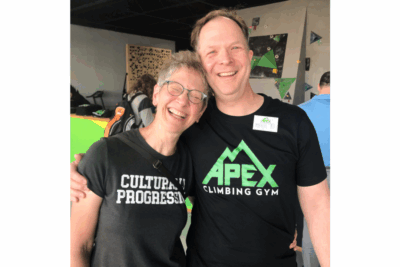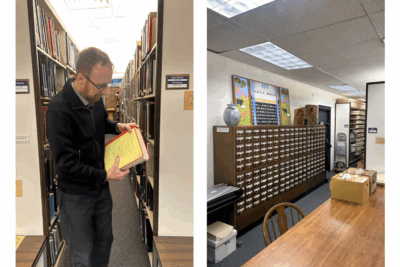I never saw a tallgrass prairie the same way after I took Ecology last fall with Ryan Sensenig, associate professor of biology. Perhaps it was the passion with which he taught us about his PhD research in Kenya, when he observed how controlled burns affected the growth of the prairie on the plains. Perhaps it was the down to earth, yet clearly knowledgeable tone with which he interacted with us in and out of class that made me and my fellow Ecology students—and many other students around campus—so instantly passionate about the ecological principles he taught. But one of the biggest parts of my transformed vision of prairies was the actual prairie planting we got to experience in that class.
A few years ago, students in Jerrell Ross Richer’s economics class submitted a proposal to the ecological stewardship committee to incorporate native landscaping onto campus grounds as a way of saving money and energy. The proposal was approved, and last fall our Ecology class sowed the first seeds onto freshly tilled ground in the plot of land south of Newcomer Center. The three seed mixes were part mulch, part grass seeds and part flowering plant seeds. An educational sign stands in front of the plot, with a picture of our hands throwing seeds into the air.From doing research projects on tallgrass prairies at Merry Lea Environmental Center to planting the seeds that would bring a brand new tallgrass prairie to life, I was quickly becoming convinced I would never live in a house with a manicured lawn ever again.
Why do these prairies matter so much? From an economic standpoint, they save money and energy in the long run since mowing isn’t necessary. They provide ecosystem services such as water infiltration, wildlife habitats and carbon sequestration. Native landscaping features plants meant to grow in a northern Indiana climate, and part of recognizing the beauty of a tallgrass prairie is recognizing beauty in what’s naturally around us.
GC is currently planning to expand natural landscaping to seven acres around campus. My environmental economics group project this semester is going to be detailed analysis of the economic benefits of such a project. I sincerely hope GC carries through with these plans and that students get involved and get excited about the opportunities available in close involvement with the physical ground we interact with each day.


